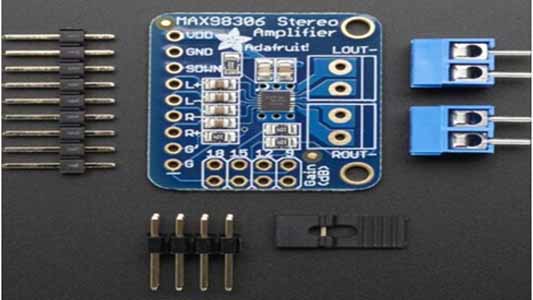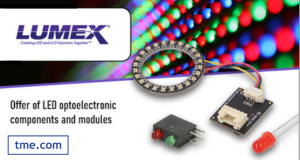Class D Audio Amplifiers Market Advancing Energy-Efficient Sound Solutions to Meet the Growing Demand for High-Performance Audio Systems
The Class D Audio Amplifiers Market is witnessing remarkable growth, driven by increasing consumer demand for energy-efficient, high-performance audio solutions. As advancements in sound technology continue to shape the industry, Class D amplifiers have gained significant traction due to their superior efficiency, compact size, and minimal heat dissipation.
The global Class D audio amplifiers market is projected to grow at a CAGR of 10.8%, increasing from USD 3.6 billion in 2025 to reach USD 7.3 billion by 2032.
With applications spanning home entertainment systems, automotive audio, professional sound equipment, and portable devices, these amplifiers are revolutionizing the way audio is amplified and delivered.
Market Growth and Demand Drivers
The demand for Class D audio amplifiers is fueled by several factors, including the rising adoption of smart and connected audio devices, increased consumer preference for high-fidelity sound systems, and the proliferation of wireless and portable speakers. Additionally, the growing emphasis on energy conservation and sustainability has prompted manufacturers to develop Class D amplifiers with improved power efficiency and reduced carbon footprint.
According to Persistence Market Research, the global Class D Audio Amplifiers Market is expected to witness substantial growth over the coming years, driven by rapid technological advancements and increasing integration of these amplifiers in consumer electronics. The market’s expansion is further supported by the growing investments in research and development (R&D) by key industry players, aiming to enhance performance, reduce distortion, and improve signal processing capabilities.
Advantages of Class D Audio Amplifiers
Unlike traditional Class A and Class AB amplifiers, Class D audio amplifiers utilize pulse-width modulation (PWM) or other switching techniques to convert analog signals into digital pulses, significantly improving efficiency. These amplifiers can achieve efficiency levels of over 90%, reducing power consumption and heat generation. The key advantages include:
- Energy Efficiency: Reduced power consumption makes them ideal for battery-operated and portable devices.
- Compact Size: Smaller form factors enable their integration into space-constrained applications.
- Minimal Heat Dissipation: Lower thermal output eliminates the need for bulky heat sinks.
- Improved Sound Quality: Advanced digital signal processing (DSP) ensures clear and distortion-free audio output.
These features make Class D amplifiers a preferred choice for a wide range of applications, including home audio systems, automotive infotainment, and professional sound reinforcement.
Key Applications Driving Market Expansion
The increasing adoption of Class D amplifiers across various industries highlights their growing significance in modern audio solutions. Some of the key application areas include:
- Consumer Electronics: The rise in smart speakers, soundbars, wireless headphones, and home theater systems has driven the demand for high-quality, energy-efficient amplification solutions.
- Automotive Audio Systems: The automotive industry is integrating Class D amplifiers to enhance in-car entertainment systems, offering superior audio performance while maintaining energy efficiency.
- Professional Audio Equipment: From concert sound systems to studio monitors, Class D amplifiers provide the power and clarity required for professional-grade applications.
- Portable and Wireless Devices: With the growing trend of mobile and wireless audio solutions, manufacturers are increasingly embedding Class D amplifiers in Bluetooth speakers, portable PA systems, and hearing aids.
Market Challenges and Opportunities
Despite the rapid adoption of Class D amplifiers, certain challenges remain. High initial design complexity, potential electromagnetic interference (EMI) issues, and distortion at high power levels are some of the concerns faced by manufacturers. However, ongoing advancements in semiconductor technology and signal processing algorithms are helping to address these limitations, opening new avenues for growth.
The increasing penetration of 5G technology and the Internet of Things (IoT) is expected to further boost demand for smart and connected audio solutions, driving innovation in Class D amplifier designs. Moreover, emerging markets in Asia-Pacific and Latin America present lucrative opportunities for industry players, as rising disposable incomes and urbanization fuel the demand for advanced audio systems.
Competitive Landscape and Key Players
The Class D Audio Amplifiers Market is highly competitive, with several key players focusing on strategic collaborations, product innovations, and technological advancements to maintain their market position. Leading companies in the industry include:
- Texas Instruments Inc.
- Analog Devices, Inc.
- Infineon Technologies AG
- NXP Semiconductors N.V.
- STMicroelectronics
- Qualcomm Incorporated
- ON Semiconductor
These companies are actively investing in R&D to introduce next-generation Class D amplifiers with improved power efficiency, enhanced audio quality, and lower electromagnetic interference.
Future Outlook
The future of the Class D Audio Amplifiers Market looks promising, with continuous advancements in digital amplification technology expected to drive further innovation. As consumer demand for high-performance, energy-efficient audio solutions grows, manufacturers are likely to focus on developing amplifiers with enhanced functionality, seamless integration with smart devices, and reduced production costs.
The forecasts steady market expansion, fueled by the increasing adoption of Class D amplifiers in various audio applications. The shift towards sustainable and eco-friendly electronic components will also play a crucial role in shaping the market’s trajectory.
Conclusion
The Class D Audio Amplifiers Market is set for significant growth, driven by technological advancements, rising demand for high-efficiency sound solutions, and expanding applications across industries. As key players continue to innovate and enhance amplifier performance, the market is poised to witness new opportunities and developments in the coming years. By embracing cutting-edge design techniques and leveraging digital advancements, the industry is well-positioned to meet the growing consumer demand for superior audio experiences.













